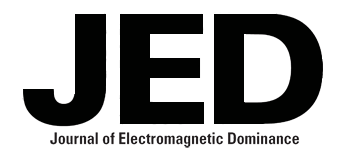The European Commission has awarded a €10 million grant to a seven-nation consortium led by Indra for the design and development of an airborne multifunction radio frequency (RF) system based on active electronically scanned array (AESA) technology.
Known as CROWN (Combined Radar, cOmmunications, and electronic Warfare fuNctions for military applications), the program is intended as the first step towards an EU program for an AESA-based multifunction RF system embodying functionality for radar, electronic warfare and communications. The project, which has been co-financed by the European Defence Agency within the Preparatory Action in Defense Research (PADR) initiative, aims to ultimately mature multifunction AESA technologies to Technology Readiness Level 4. The long-term goal, is to continue developing these technologies in a subsequent development phase and mature them to TRL 7, when they will be demonstrated in an aerial platform by 2027.
According to a notification issued by the EU, the CROWN study program, will last for 30 months from July 2021. As well as developing critical components and system technologies, CROWN is also intended to establish roadmaps and priorities avoid dependencies on non-EU supply chains.
Spain’s EW systems house, Indra, will coordinate management of the CROWN project. It will additionally lead the technical activities on Work Package 6 (wideband Digital Beam Forming [DBF]) and Work Package 9 (laboratory demonstration) alongside participation in the remaining work packages. These include tasks such as requirements and architecture definition, plus other technical activities related to the AESA antenna, resource manager, and compact transmit/receive module (TRM) definition and implementation.
Other industry participants in the CROWN project comprise Thales DMS (France), Office National d’Etudes et de Recherches Aerospatiales (ONERA – France), Hensoldt Sensors (Germany), Saab (Sweden), Leonardo (Italy), and Elettronica (Italy). Fraunhofer Research (Germany), the Swedish Defence Research Agency, TNO (Netherlands) and the Baltic Institute of Advanced Technology (Lithuania) are also participating.
CROWN is intended to exploit a number of advanced technologies, including new broadband digital AESA architectures for multifunction operation; antenna technologies supporting multifunction shared apertures; algorithms and processing for digital beamforming; artificial Intelligence for smart resource management; and monolithic microwave integrated circuit integrated circuit design using different semi-conductor technologies – such as Gallium Nitride and Silicon germanium – for compact, high power, wide bandwidth and tunable TRMs.
A small-scale prototype (TRL 4) will be designed, manufactured and tested in a laboratory environment. System modelling will integrate models from the main building blocks (antenna, TRMs, DBF and the software-based resource manager) to assess the performance of the defined system in different scenarios. – R. Scott


